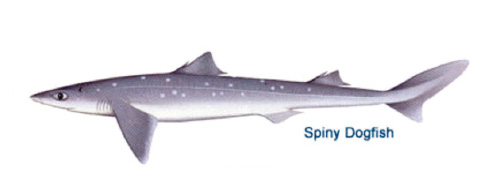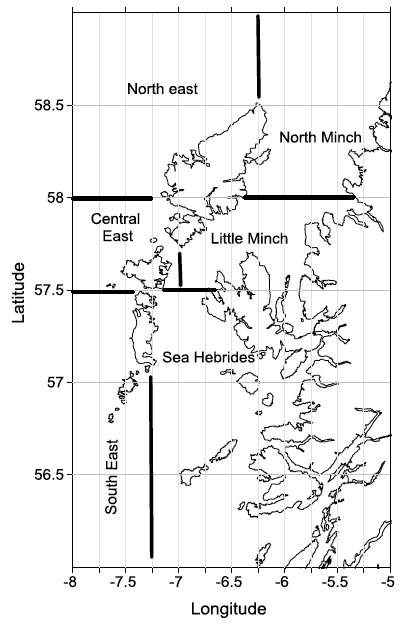Scottish Marine and Freshwater Science Vol 6 No 7: Collection of bycatch data for spurdog (Squalus acanthias) in the North Minch fishery: Report of Fishing Industry Science Alliance (FISA) Project 02/13
Report presenting new data on the levels of spurdog bycatch, locations of by-catch and biological information in terms of the sizes and sex of the fish caught in order to inform the debate on whether a controlled incidental by-catch (i.e. not targeted) fi
Appendix I
Instructions issued to participating vessels

Fishing Industry Science Alliance – Spurdog/Spiny dogfish project

Aims The project will run over the next two winters (2013/14 and 2014/15) and aims to collect biological data on spurdog ( Squalus acanthias) by-catch in the Nephrops fisheries operating in ICES VIa. Data will be used to inform negotiations regarding the need to discard rather than land this species.
The project will collect data from fishing vessels on:-
1. Where are spurdog being caught?
2. How much is being caught?
3. What are the sizes, sex and maturity of the spurdog being caught?
As well as recording the weight of spurdog discarded by location and date we are asking skippers to return samples via Barratlantic and Islander Shellfish. These samples will be measured by biologists from the Scottish Association for Marine Science to address aim 3 above.
To be scientifically useful it is essential that the sampled fish can be matched up with where and when they were caught so careful record keeping is required. Special logsheets and labels will be supplied to skippers who agree to participate.
A small payment (£250) will be made for each weekly set of samples which are returned from a fishing trip with a fully filled in logsheet. The payment is strictly to offset the additional work required on board the fishing vessels and is designed not to encourage targeting of the spurdog. If samples are collected on a total of more than 40 individual weeks of fishing each winter further payments will not be possible because of the available budget for the project.
Methodology – Please read carefully and if anything is unclear contact Clive Fox (01631 559000, clive.fox@sams.ac.uk for clarification).
1) Recording logsheets are supplied and need to be filled in for each haul even if no spurdog are encountered.
2) If no spurdog are caught on a tow record the tow information and enter “0” in the Spurdog caught column.
3) If spurdog are caught on a tow fill in the tow details and retain a sample of the spurdog as described below.
4) If only a few spurdog are being caught, fish from several tows from a fishing area (see map below) can be combined with the aim of retaining 50 randomly selected fish from each area fished per week. A week being defined as starting on Monday and finishing on Sunday.

5) Place the spurdog in a fish box and label clearly with vessel name and the date and chill or freeze the fish.
6) If a lot of spurdog are caught, it is only necessary to retain up to 50 fish but ensure that fish are picked out at random. Do not pick fish from just the first or last few boxes discarded and do not choose fish on basis of size, just take the top few fish from several of the boxes and retain them.
7) The sample of up to 50 spurdog must be labelled and the box of fish along with that week’s log-sheet/s returned to Islander Shellfish or Barratlantic where the biological data will be recorded once sufficient samples have accumulated.
Only these vessels have derogations to retain spurdog
Astra
III. SY 153
Brighter Morn. CY 77
Cheerful. Cy 254
Heather Isle, SY47
Joanna, CY701
Nordic Way. CY 340
Sheigra, SY7
Contact
There is a problem
Thanks for your feedback